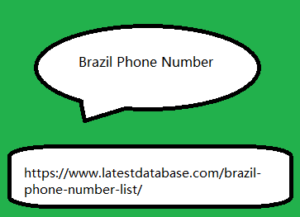Post by afifatabassum on Mar 11, 2024 0:31:49 GMT -5
Research by Page Personnel, an employment agency specializing in the search and selection of professional figures, found that half of Italian companies block access to Facebook. Francesca Contardi, CEO of the company, explains that the main reasons are fears of industrial espionage and loss of productivity. Il Sole 24 Ore asked me for my opinion on the subject. In my opinion, decisions of this type should be made by weighing not only the risks, but also the opportunities arising from the conscious use of social media by employees. Companies should try to design a shared path, outlined by training and social media policy , aimed at "giving more power" to employees, putting them in a position to give rapid responses to customers via the network. This is what Josh Bernoff and Ted Schadler also support in the recent .
Empowered or the legendary CEO of Zappos, Tony Hsieh, who Brazil Phone Number in his Delivering Happiness explains how we should aim to spread the culture of customer service, making employees happy.In the new Newsweek written by Tina Brown (legendary director of The Daily Beast), the Data Beast column is inaugurated with my world map of social networks . A small moment of glory ruined only by the incorrect mention of my name in the paper versionThe recent protests in North Africa have stimulated many scholars to understand the use that the population has made of new media. Among these is André Panisson , a Brazilian doctoral student at the University of Turin who has done very interesting work and to whom I asked some questions. How were you able to visualize (video below) the diffusion, over time, of the information transmitted by Egyptians through Twitter, in the hours in which Mubarak capitulated? To collect the data I used a Python web server appropriately configured to act as a bridge between Twitter and Gephi .

In particular, together with the Gephi team I implemented the Graph Streaming API. Each node represents a Twitter user and the links represent retweets of a message containing the hashtag #jan25. The data corresponds to approximately 10% of all retweets made in that hour. But from these initial data we were able to obtain complete data, which corresponds to more than 25 thousand users and more than 40 thousand retweets... all in one hour! How useful do you think information visualization is for understanding social phenomena? I think it is not only useful, but indispensable for understanding social phenomena. These days we receive an enormous amount of data, and it's difficult to understand what is useful and reliable. In the case of the retweet network we created, each link between users represents a bond of trust, because a user must trust the source of the information to retransmit it. Therefore this network tells us very interesting things about how information spreads through social media.
Empowered or the legendary CEO of Zappos, Tony Hsieh, who Brazil Phone Number in his Delivering Happiness explains how we should aim to spread the culture of customer service, making employees happy.In the new Newsweek written by Tina Brown (legendary director of The Daily Beast), the Data Beast column is inaugurated with my world map of social networks . A small moment of glory ruined only by the incorrect mention of my name in the paper versionThe recent protests in North Africa have stimulated many scholars to understand the use that the population has made of new media. Among these is André Panisson , a Brazilian doctoral student at the University of Turin who has done very interesting work and to whom I asked some questions. How were you able to visualize (video below) the diffusion, over time, of the information transmitted by Egyptians through Twitter, in the hours in which Mubarak capitulated? To collect the data I used a Python web server appropriately configured to act as a bridge between Twitter and Gephi .

In particular, together with the Gephi team I implemented the Graph Streaming API. Each node represents a Twitter user and the links represent retweets of a message containing the hashtag #jan25. The data corresponds to approximately 10% of all retweets made in that hour. But from these initial data we were able to obtain complete data, which corresponds to more than 25 thousand users and more than 40 thousand retweets... all in one hour! How useful do you think information visualization is for understanding social phenomena? I think it is not only useful, but indispensable for understanding social phenomena. These days we receive an enormous amount of data, and it's difficult to understand what is useful and reliable. In the case of the retweet network we created, each link between users represents a bond of trust, because a user must trust the source of the information to retransmit it. Therefore this network tells us very interesting things about how information spreads through social media.


